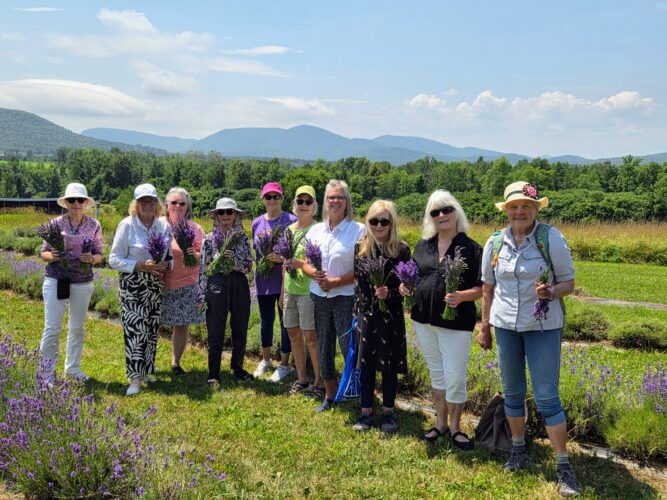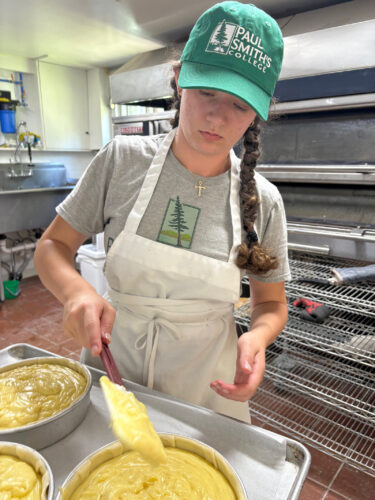MARTHA SEZ: ‘I didn’t have pinkeye; it was probably the smoke’
Waking up to hazy skies in Keene Valley as the sun comes up over Spread Eagle Mountain, I smile groggily. The early morning mist is so beautiful here in the Adirondacks.
Then I remember that the mist is, at least in part, wildfire smoke, and it loses its bucolic appeal. I no longer find it so beautiful. My eyes are starting to itch.
Last week, during a routine check-up, I asked my doctor to look at my eyes. “Do I have pinkeye?” I wanted to know. “They’ve been bloodshot for days.” She said no, I didn’t have pinkeye; it was probably the smoke.
Others have complained of having a scratchy throat, coughing and having difficulty breathing. The smoke from faraway wildfires in western Canada is triggering asthma attacks in susceptible people.
Today, Judson Jones, a meteorologist and reporter for the “New York Times,” informs us that Canadian wildfires burning across northern Manitoba and Saskatchewan are sending smoke through central Canada, the Great Lakes region and the northeastern United States, reducing air quality and visibility in major cities.
Hannah Holmes, in her book “The Secret Life of Dust,” wrote “The northernmost forests are a surprising source of soot (in the atmosphere). Canada and Russia together are home to nearly one-fifth of the world’s forests.
“…firs in these dry, remote forests often burn unchecked,” Holmes went on to explain. “In Canada…. Almost all the fires are ‘crown fires.'”
Crown fires burn superhot, consuming everything, from the soil — in an especially dry year to a depth of up to three feet — to the crowns of the trees. Crown fires produce much more smoke, and propel it much higher into the air, than a ground fire does.
According to the Western Fire Chiefs Association, “Wildfire smoke can ascend as high as five miles into the atmosphere, reaching the troposphere…the lowest part of the atmosphere, where thunderstorms form…In some cases, smoke particles can reach the stratosphere, the layer right above the troposphere.”
Today, I see in the local news on my computer screen, Keene Valley air quality is given a numerical rating of 105: fine particles, unhealthy for sensitive groups. Am I in the sensitive category? I wonder. After all, I am elderly. Almost immediately, however, I’m distracted by a recipe for Mississippi chicken. Southerners are famous for their chicken recipes.
This is a slow cooker recipe calling for pepperoncini, although in a pinch the directions allow pickled banana peppers to be used in their place. The recipe also calls for half a cup of pepperoncini or banana pepper pickle juice, which seems excessive. I wonder if this Mississippi chicken is any good. I consult the comments.
“Tasted briney,” one contributor noted.
Another wrote “I followed the recipe to a T, except I don’t have a crockpot so I cooked it in the oven. I didn’t have any chicken thighs, so I substituted some leftover Jimmy Dean pork sausage and reduced the butter by half. I left out the chicken stock and instead of the pepperoncini I used bell pepper and added some dill pickle juice. My family did not enjoy it that much. I will not make this recipe again.”
There were dozens of comments, but my favorite was (and this is true): “Made it with octopus but didn’t like the chewy consistency. Would not make again.”
Back to the wildfire news.
Since the middle of May, National Oceanic and Atmospheric Administration (NOAA) satellites have been monitoring heat signatures and thick plumes of smoke, some stretching for thousands of miles, from Canadian wildfires.
Heat, drought and dry conditions contributed to more than 160 fires early in Canada’s “annual wildfire season,” which runs from May through September, most of them in Manitoba, Ontario and Saskatchewan. These fires were followed by others in British Columbia, Alberta, Quebec and Newfoundland and Labrador, impacting air quality in the United States as the smoke drifted southward.
According to a recent NOAA report, “Wildfires are a natural part of Canada’s boreal forests, which consist primarily of coniferous trees in high-latitude regions. However, as global temperatures continue to rise, wildfires in these regions are becoming more frequent, intense, and longer-lasting.”
By 2025, so-called zombie fires in Alberta and British Columbia had continued to smolder beneath the snow, persisting for more than two years. This year, an area larger than Vermont has already been consumed.
All right, maybe I’ll do the Mississippi chicken, but I won’t make it with octopus.
Be careful, and have a good week.
(Martha Allen, of Keene Valley, has been writing for the News since 1996.)




